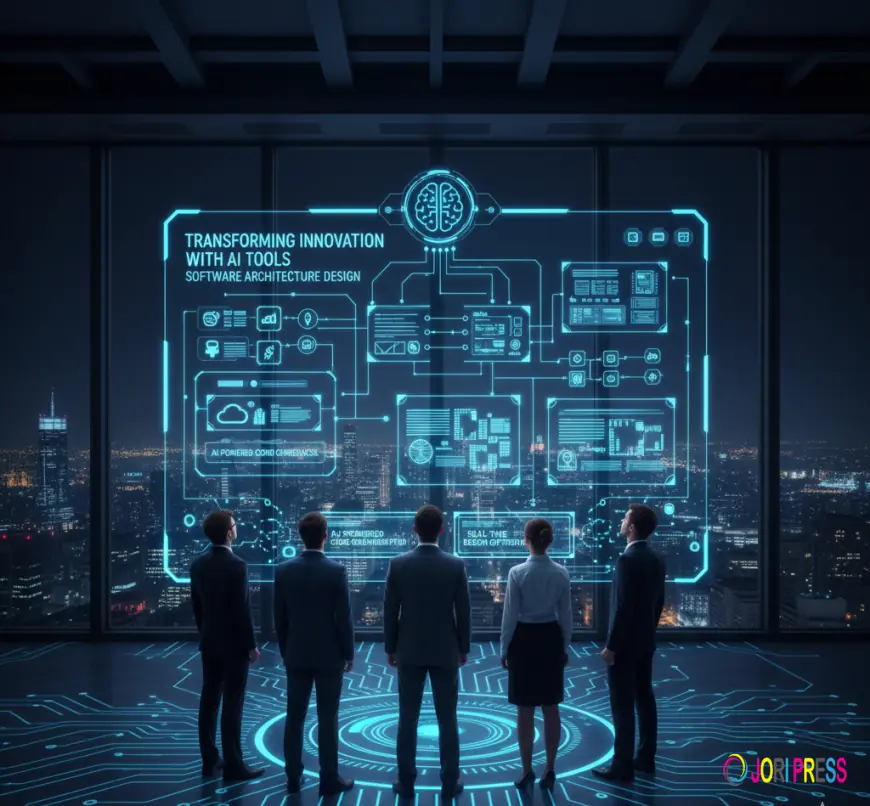Transforming Innovation with AI Tools for Software Architecture Design

Introduction
In the ever-evolving world of software engineering, the role of architecture design has become more crucial than ever before. The architecture of a software system forms its foundation—it defines scalability, security, performance, and maintainability. However, as systems become increasingly complex and distributed, traditional methods of designing software architectures often struggle to keep pace. This challenge has led to the rise of artificial intelligence as a powerful ally in software design. Today, AI tools for software architecture design are reshaping how engineers plan, model, and optimize applications, enabling smarter, faster, and more reliable systems.
The Shift Toward Intelligent Architecture Design
Software architecture once relied primarily on human expertise, intuition, and manual analysis. Architects would evaluate business requirements, model system components, and estimate dependencies to create a blueprint that balanced functionality and efficiency. While this approach remains essential, the scale and diversity of modern software ecosystems—spanning cloud environments, microservices, APIs, and AI-driven modules—demand more adaptive methods.
Artificial intelligence brings automation, precision, and predictive insight to this process. Instead of relying solely on static design documents, architects can now leverage AI to simulate real-world scenarios, identify design bottlenecks, and make data-driven decisions. These intelligent tools analyze millions of design variables, performance logs, and historical data points to recommend the most efficient and secure architectural solutions.
How AI Enhances the Software Architecture Process
Artificial intelligence transforms the traditional architecture design process by making it more dynamic, context-aware, and iterative. Through machine learning and deep learning models, AI systems can process large-scale data related to user behavior, infrastructure performance, and software dependencies. These insights enable the creation of architectures that are both resilient and optimized for real-world conditions.
During the early stages of design, AI assists architects in defining the optimal structure of applications by suggesting appropriate design patterns and frameworks. As the system evolves, AI tools continuously monitor its performance, providing feedback on scalability and fault tolerance. The integration of AI into architecture design transforms it into a continuous, self-improving process rather than a one-time blueprint. This leads to architectures that adapt to changing demands, technologies, and user expectations.
The Role of AI in Optimizing Software Decisions
AI tools bring an analytical approach to software architecture by interpreting system-level trade-offs that are often too complex for manual evaluation. For example, when determining whether to implement a microservices or monolithic architecture, AI can evaluate parameters such as latency, data consistency, and resource consumption across different environments. It can predict how each architecture will behave under varying load conditions, allowing teams to make informed decisions backed by empirical evidence.
Moreover, AI enhances decision-making during integration and deployment. By analyzing interdependencies and communication pathways, AI can detect potential bottlenecks or security vulnerabilities before they cause real-world failures. This predictive capability makes software architecture not just a design phase but a living, evolving process guided by intelligence.
Bridging the Gap Between Architecture and Development
One of the greatest advantages of integrating AI tools into architecture design lies in their ability to bridge the gap between architecture and implementation. Traditionally, architects create system blueprints, and developers translate those designs into code. This handoff often introduces discrepancies, misinterpretations, or inefficiencies.
AI-driven platforms streamline this process by automating parts of the translation from architecture models to code-level recommendations. For instance, AI can generate infrastructure configurations, database schemas, or deployment scripts directly from architectural diagrams. This ensures consistency between design and execution while reducing manual errors and accelerating delivery timelines.
By acting as a bridge between vision and implementation, AI tools enable teams to maintain architectural integrity throughout the software lifecycle.
Improving Quality and Security with AI Integration
Quality assurance and security have always been critical considerations in architecture design. AI elevates these aspects by embedding continuous monitoring and validation into the design framework. Instead of waiting until testing phases, AI tools can identify potential performance bottlenecks, design flaws, or security vulnerabilities early in the development process.
For example, AI systems trained on historical incident data can predict which architectural configurations are most susceptible to specific threats. They can simulate attack scenarios, assess response mechanisms, and recommend preventive measures before deployment. Additionally, AI-based quality analyzers ensure that performance metrics such as response time, scalability, and reliability align with architectural goals.
The result is a secure and high-performing architecture that evolves intelligently with every iteration.
Enhancing Collaboration through AI-Powered Insights
Designing software architecture is rarely a solo effort. It involves collaboration between architects, developers, project managers, and business stakeholders. AI tools foster this collaboration by providing transparent insights that everyone can understand and act upon.
Through visual modeling interfaces, AI translates complex architectural data into easily digestible formats, helping teams visualize dependencies, workflows, and system health in real time. Predictive analytics also guide discussions around cost optimization, resource allocation, and risk management, ensuring that technical decisions align with business objectives.
This alignment reduces miscommunication, accelerates decision-making, and promotes a shared understanding of architectural direction across departments.
The Future of AI in Software Architecture Design
As artificial intelligence continues to mature, its role in software architecture design will only deepen. We are entering an era where generative AI can automatically propose complete architectural blueprints based on high-level business requirements. These AI-generated architectures can balance scalability, compliance, and performance constraints with minimal human intervention.
Furthermore, AI tools are expected to integrate seamlessly with cloud-native environments, DevOps pipelines, and container orchestration platforms. This convergence will allow architectures to continuously evolve, adapting to workload changes and technological advancements.
In the near future, software systems will become self-architecting—able to analyze their own performance, predict future requirements, and restructure components autonomously. Such advancements will redefine what it means to design and maintain digital infrastructure.
Conclusion
The integration of AI tools for software architecture design marks a major turning point in the evolution of software engineering. It transforms architecture from a static document into an intelligent, adaptive framework that continuously learns, optimizes, and evolves. By harnessing AI, organizations can design systems that are faster, more secure, and aligned with real-world needs.
Artificial intelligence does not replace human creativity; it amplifies it. By blending human intuition with machine intelligence, software architects can move beyond traditional limitations and build digital ecosystems that stand the test of time. The future of architecture design is intelligent, data-driven, and self-optimizing—and AI is the force making it possible.
What's Your Reaction?
 Like
0
Like
0
 Dislike
0
Dislike
0
 Love
0
Love
0
 Funny
0
Funny
0
 Angry
0
Angry
0
 Sad
0
Sad
0
 Wow
0
Wow
0



















































